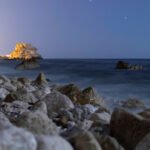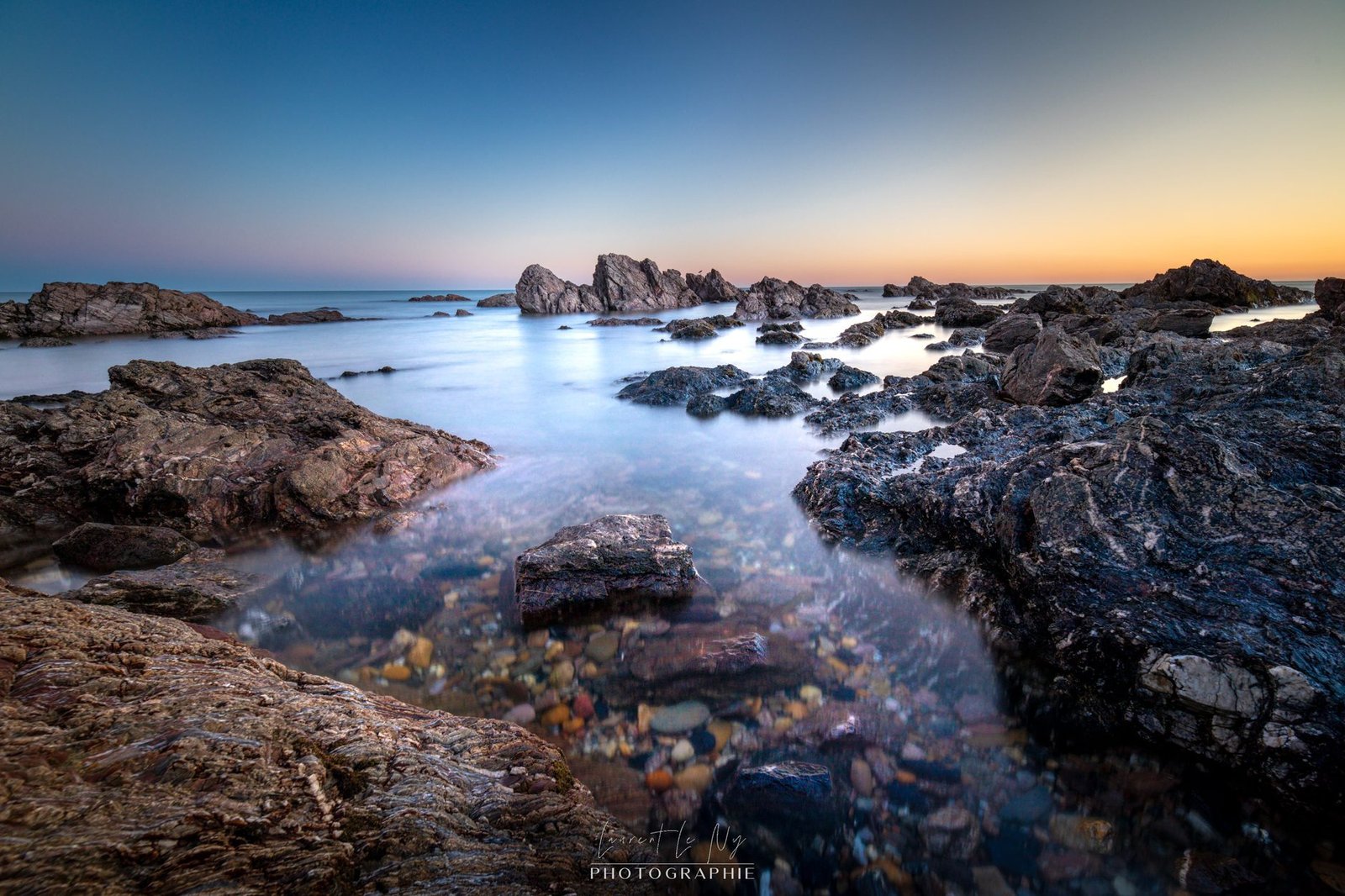Introduction
Photography by the sea is a popular activity among amateurs and professionals in photography. The seascapes offer a variety of interesting and captivating subjects, from waves breaking on the rocks to sunsets on the infinite horizon. However, there are a few things to consider when embarking on seaside photography. In this article, we will explore some tips and tricks to help you capture beautiful and memorable images.
Prepare your equipment
Seaside photography can offer beautiful landscapes and unique opportunities to capture unforgettable moments. However, before going on an adventure, it is important to prepare your equipment well. Here are some tips to help you:
Check the weather
Before going to the beach, be sure to check the weather. Weather conditions can change quickly by the sea, so it is essential to know what to expect. This will help you choose the right clothes and protect your camera accordingly.
Check the tide schedules
Tides can have a significant impact on your photos by the sea. Check the tide schedules to find out when the tide will be low or high. This will allow you to plan your shots according to the state of the sea and the rock formations exposed.
Take the right clothes
Photography by the sea can be refreshing, especially if you are exposed to the wind or spray. Make sure you wear appropriate clothing to protect you from cold and moisture. A waterproof jacket and comfortable shoes are essential elements.
Protect your device
Proximity to the sea means that your camera can be exposed to moisture, sand and splashes. Use a waterproof case or a protective cover to avoid any damage. Don’t forget to clean your equipment regularly to remove sand and salt.
Appropriate photo lens
Choose a suitable lens for seaside photography. A wide-angle lens can be ideal for capturing vast landscapes, while a telephoto lens can be used to isolate specific subjects. Experiment with different objectives to obtain various results.
Warn someone
Before leaving for your seaside photo shoot, be sure to notify someone of your destination and your scheduled return time. This will guarantee your safety in the event of a problem on site.
Play with the light
Light is a crucial element in photography, and this is especially true by the sea. Sunrises and sunsets offer a soft and warm light that can give a magical atmosphere to your photos. Try to plan your photography sessions around these times of the day to get the best results.
In addition, sunlight reflected on the water can create dazzling reflections. Experiment with different shooting angles to capture these reflections in a creative way.
Balance exposure with a GND gradient filter
Photography by the sea is a real treat for the eyes. The seascapes offer a multitude of possibilities for magnificent shots. However, it can be difficult to obtain a balanced exposure when photographing at the beach. Fortunately, there is a simple and effective solution: the use of a GND degraded filter.
A degraded filter is an accessory that attaches in front of the camera lens. It is composed of a transparent part and a tinted part. With this filter, you can reduce the brightness of the sky while maintaining the right exposure of the foreground. This avoids overexposed areas in the sky and keeps details in shadowy areas.
To use a degraded filter, simply attach it to your lens and position it so that the tinted part is above the sky. You can adjust the position of the filter according to the intensity of the light and the desired effect.
By using a gradient filter, you will be able to obtain perfectly exposed seaside photos, with a detailed sky and balanced colors. This will allow you to capture all the beauty of the seascapes and create images that will cause a sensation.
Shoot in a long pose with an ND filter
A particularly interesting technique to try is the long pose, which makes it possible to create blur and soft effects in the water. For best results, the use of an ND filter is recommended. An ND filter, or neutral density filter, is an accessory that reduces the amount of light entering your camera lens. This increases the exposure time, which is essential for a successful long pose.
By using an ND filter, you can capture images with exposure times ranging from a few seconds to several minutes, thus creating movement effects in water and clouds.
To begin with, make sure you have a solid tripod to stabilize your camera. Long exposure requires prolonged exposure, so it is essential to keep the device stationary. Then, attach your ND filter to the lens. Make sure that it is properly adjusted and that it does not let in parasitic light.
Once ready, choose an interesting subject, such as a rock, a lighthouse or a pier, and compose your image. Set your camera to manual mode and adjust the settings accordingly. Reduce the ISO sensitivity to avoid noise, close the diaphragm for a greater depth of field, and adjust the shutter speed according to the ambient brightness.
Finally, trigger your camera and let it expose for the desired duration. Meanwhile, avoid touching the device to avoid any unwanted blur. Once the long installation is finished, examine your image and adjust if necessary. Photography by the sea with a long pose and an ND filter can give spectacular results. Experiment with different exposure durations and observe the effects obtained. You will be surprised by the beauty and tranquility that this technique can bring to your photos.
Use a circular polarizing filter
It can sometimes be difficult to take photos that do justice to the scene. Fortunately, there is a simple but powerful tool that can greatly improve your shots: the circular polarizing filter.
A circular polarizing filter is an accessory that attaches to the front of your lens. It acts by filtering polarized light, which eliminates unwanted reflections and increases contrast and color saturation. This means that you will get sharper and more vibrant photos, with deeper blues and brighter whites.
When you photograph by the sea, you often have to deal with reflections on the water and sand, which can make your photos flat and dull. By using a circular polarizing filter, you can reduce these reflections and obtain clearer and more detailed images. You will also notice a significant improvement in color saturation, which will give your photos a more vibrant and lively appearance.
To use a circular polarizing filter, simply screw it on your lens and rotate it until you get the desired effect. You can adjust the intensity of the filter according to your needs and the ambient brightness. Do not forget to regularly check the orientation of the filter, as its effect may vary depending on the angle of the light.
Master the art of composing at the wide angle
Photography by the sea offers magnificent opportunities to capture breathtaking landscapes. One of the most effective ways to highlight these landscapes is to use a wide-angle lens. In this article, we will give you some tips to master the art of composing at the wide angle and get stunning photos.
Choose your point of view
When photographing by the sea with a wide-angle lens, it is important to choose your point of view wisely. Try to find a high point of view to capture the beauty of the ocean and the coast. You can also get closer to the shore to capture interesting details, such as shells or rocks.
Use the escape lines
Escape lines are a great way to guide the viewer’s gaze through your photo. By the sea, you can use the lines formed by waves, rocks or even piers to create a dynamic and captivating composition.
Experiment with light
Light plays an essential role in seaside photography. Try to capture the reflections of the sun on the water or the warm colors of the sunset. You can also experiment with shadows to create dramatic effects.
Include human elements
Integrating human elements into your photos can add an interesting dimension to your seaside compositions. You can include people walking on the beach, surfers or even boats in the distance. This will give a scale and perspective to your images.
Pay attention to the details
When using a wide-angle lens, it is important to pay attention to details. Objects near the camera may seem disproportionate, so make sure you compose your image well. You can also experiment with the depth of field to highlight certain elements.
Aperture, sensitivity, speed
Whether you are an amateur or professional photographer, it is important to understand some key concepts such as aperture, sensitivity and speed to get the best results. So prefer the manual mode of your box.
The opening
Opening is the first element to take into account. It controls the amount of light that reaches your camera’s sensor. By the sea, where the light can be intense, it is often advisable to use a small opening (a large number f/). This will reduce the amount of incoming light and obtain a greater depth of field, which is ideal for capturing the details of waves and rocks.
Sensitivity (ISO)
Sensitivity, also known as ISO, determines your camera’s ability to capture light. By the sea, you can often encounter low-light conditions or high contrasts between the sky and the water. In these situations, it is recommended to increase the ISO sensitivity to obtain well-exposed images. However, you must be careful because too high an ISO sensitivity can cause noise in your photos.
The shutter speed
Finally, shutter speed is essential to freeze the movement of the waves or to create an artistic blur effect. A fast shutter speed (1/500s or more) will freeze the movement of the waves, while a slower speed (1/30s or less) will create a spun effect to give an impression of movement.
Capture the movement
Waves breaking on rocks or sand are a popular subject in seaside photography. To capture the movement of the water, use a slower shutter speed. This will create a blur effect that will give a feeling of movement to your photos (long pose). Don’t forget to use a tripod to avoid unwanted blurs. If you shoot from rocks there are spikes to replace on your tripod. This prevents the tripod from slipping and damaging your photo equipment.
Pay attention to the details
The beaches and coasts are full of interesting details that can add interest to your photos. Look for shells, footprints in the sand or patterns on the rocks. These small details can bring an extra dimension to your images and tell a story.
Clean your equipment after your shots
This is an important point. Spray, salt water, sand are the enemies of your photo equipment. Remember to clean your optics, filters by removing dirt with a blower pear and then suitable products or a moistened microfiber cloth. Rinse your tripod with clear water as well.
Conclusion
Photography by the sea can be an enriching and rewarding experience. By following these tips and tricks, you will be able to capture beautiful and memorable images. Don’t forget to enjoy the present moment and let yourself be inspired by the beauty of the sea.


